-
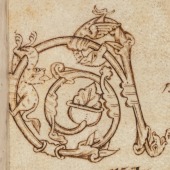
Apocalypse with glossary
-
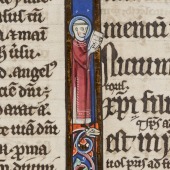
Painting the saints
-
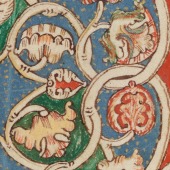
A fine hand
-
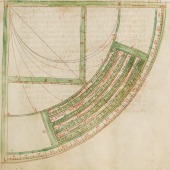
A hefty medieval science manual
-
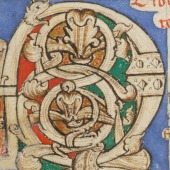
A giant manuscript for a literary giant
-
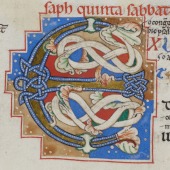
Glossing the Bible
-
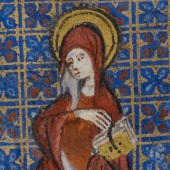
A Book of Hours of the Use of Paris
-

Creation scenes in a Latin Bible
-
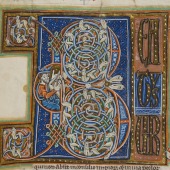
David playing the harp
-
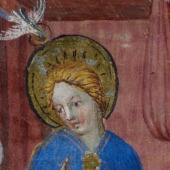
Hours of Virgin
-

Diagram from an Astrolabium
-
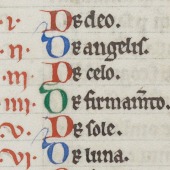
Ornaments of Champagne
-
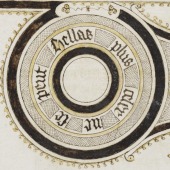
A curious initial
-
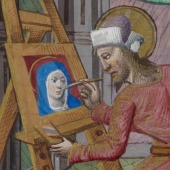
St Luke portraying the Virgin
-
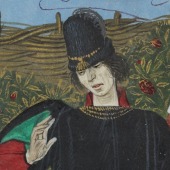
Twelve ladies of rhetoric
-
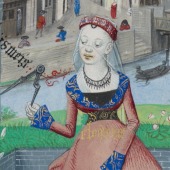
Lady Eloquence
-
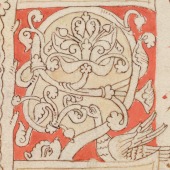
Caroline minuscule
A gallery of Cambridge treasures
The moving word
In 2011, Paul Binski and Patrick Zutshi, with the collaboration of Stella Panayotova, published Western illuminated manuscripts: a catalogue of the collection in Cambridge University Library with Cambridge University Press. The book covers manuscripts from Western Europe and the British isles, including a large selection of manuscripts in Latin. In this final section of the exhibition we present a number of the Latin manuscripts that were highlighted in that book, all of which had their provenance in France. The descriptions and explanatory texts are based on the notes provided in the catalogue.
This selection of the University Library’s Latin treasures gives some taste of the variety of Latin manuscripts produced in France, from astronomical treatises, scholarly commentaries and compilations, to Psalters and Gospels. Works such as these were often commissioned by wealthy secular or clerical patrons and created by master scribes and illuminators to render the pages themselves as resplendent as the words written upon them. Manuscript illumination represents one of the high points of medieval art, incorporating attention to detail and to the latest technical advances. Though some of the manuscripts shown here might have been used as part of public events and during the Mass, others may only have been viewed by a small handful of people in their time. Their beautiful decoration does not actually mean that they were used as display pieces or artwork, as we might imagine, but rather to assist in creating an atmosphere of devotion and divine beauty for the private viewer. Their power lies in their ability to awaken the spirit as well as the eye, moving the viewer to see the world differently and intuit the spiritual dimension of that reality more intensely. Such manuscripts also serve as a testament to the pre-eminence of Latin language and culture throughout Medieval Europe: Latin provided the context and background for most vernacular production, literary and visual, and allowed for what now appears as the stunning coherence of form and contents that characterises most European cultural production of the period.